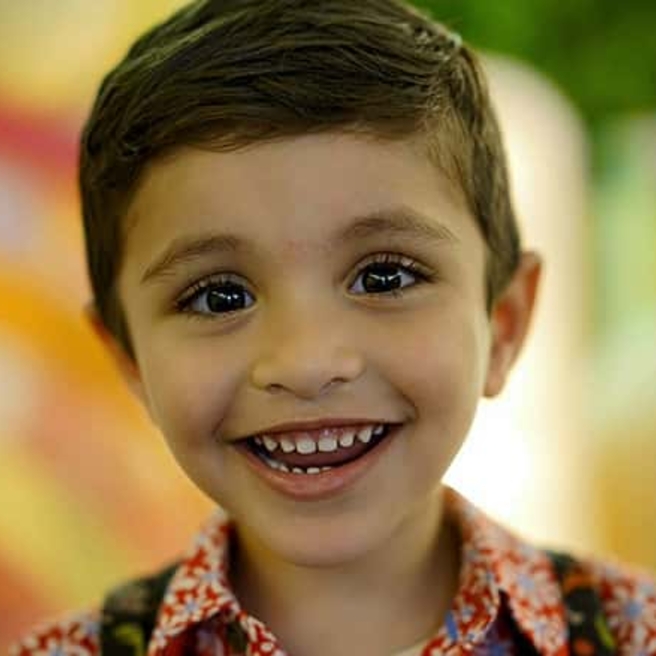What is low blood sugar or hypoglycemia?
Low blood sugar — or as it is known medically, hypoglycemia — refers to blood concentration of glucose (sugar) that is too low to fuel the brain and the body. Glucose is the main source of fuel for the body, particularly the brain. The normal range of blood glucose, depending on the timing and nutritional content of the last meal consumed, is approximately 70 to 140 mg/dl (milligrams of glucose per deciliter of blood).
Hypoglycemia can be the main symptom of many different medical conditions. It can also be a complication of the treatment for diabetes, particularly in patients treated with insulin. Here, we refer to low blood sugar as a sign of a medical condition, rather than hypoglycemia seen in patients with diabetes.
What are the symptoms of hypoglycemia?
The following are the most common symptoms for hypoglycemia. However, each child may experience symptoms differently. Symptoms may include:
- Palpitations (fast-beating, fluttering or pounding heart)
- Shakiness
- Dizziness
- Sweating
- Hunger
- Headache
- Irritability
- Pale skin color
- Sudden moodiness or behavior changes, such as crying for no apparent reason
- Clumsy or jerky movements
- Difficulty paying attention, or confusion
- Loss of consciousness
- Seizure
However, infants and young children with hypoglycemia may not demonstrate symptoms.
What causes hypoglycemia?
Hypoglycemia results from an imbalance between how much glucose is in the blood and how much glucose the body uses and needs. When we are awake and eating, the main supply of glucose is what we eat and drink. However, the body has several mechanisms (fasting mechanisms) to make sure that a constant supply of glucose is available for brain metabolism during periods of overnight fasting. When these mechanisms fail, a child can become hypoglycemic.
Glucose levels are tightly regulated by hormones that control the activation of these mechanisms. The most important hormone for glucose regulation is insulin. So, when not enough insulin is produced (like in diabetes) blood sugar levels are high (hyperglycemia) and conversely, when too much insulin is produced, blood sugar levels are low (hypoglycemia). Other hormones responsible for regulating glucose levels include growth hormone and cortisol. The liver also pays an important role in maintaining normal glucoses by both storing and making glucose.
In children, the most common medical condition that causes hypoglycemia is hyperinsulinism (HI). In hyperinsulinism, the beta cells of the pancreas secrete too much insulin, which results in hypoglycemia. There are multiple causes of HI, including maternal diabetes, fetal stress prior or during delivery, or genetic defects. Insulinomas are pancreatic tumors that secrete insulin, which also result in hypoglycemia.
Other causes of hypoglycemia in children include deficiency of growth hormone and/or cortisol, and genetic defects in the liver affecting its ability to release glucose. Hypoglycemia can also be a consequence of surgeries that alter the gastrointestinal track (the path food takes from mouth to elimination), such as surgery to prevent reflux known as fundoplication. In these cases, low blood sugar develops after the surgery. What distinguish this type of hypoglycemia is that low blood sugar occurs shortly after a meal rather than during fasting. This form of hypoglycemia is known as postprandial hypoglycemia or late dumping syndrome.
In addition, hypoglycemia may also occur as a result of accidental or intentional ingestions, taking certain medications or consuming alcohol.
Why is hypoglycemia a concern?
The brain depends on blood glucose as its main source of fuel. Too little glucose can impair the brain's ability to function. Severe or prolonged hypoglycemia may result in seizures and serious brain injury, or even death.
How is hypoglycemia diagnosed?
In addition to a complete medical history and physical examination, certain blood tests are performed to diagnose hypoglycemia.
For those who have symptoms of hypoglycemia and do not have diabetes, the underlying disorder is diagnosed by:
- Measuring blood glucose and other metabolic fuels such as lactate and ketones, and hormone levels while the child is experiencing the symptoms.
- Some patients with hypoglycemia must be admitted to the hospital to undergo a supervised fasting study to reproduce the low blood sugar episode and to safely collect the needed blood tests.
What is the treatment for hypoglycemia?
The immediate treatment for hypoglycemia is to have the child eat sugar-containing foods/liquids or to give intravenous fluids. Specific treatment for hypoglycemia depends on the specific cause of the hypoglycemia and will be determined by your child's doctor based on:
- Your child's age, overall health and medical history
- Extent of the disorder
- Your child's tolerance for specific medications, procedures or therapies
- Expectations for the course of the disorder
- Your opinion or preference
For children with hypoglycemia conditions, the goal of treatment is to maintain a safe blood glucose level. This involves testing blood glucose often, learning to recognize oncoming symptoms and treating the condition quickly, based on instructions given by your child's doctor.
To treat low blood glucose immediately, your child should eat or drink something that has sugar in it, such as orange juice, milk, cake icing, glucose gel or glucose tablets.
Your Child's HI Appointment
Your first visit will be either an outpatient or inpatient visit, depending on your child’s needs.

Support Our Next Breakthrough
Philanthropic donations fuel breakthrough discoveries, innovative care and pioneering treatments at the Congenital Hyperinsulinism Center.
Resources to help
Congenital Hyperinsulinism Center Resources
We have created resources to help you find answers to your questions about congenital hyperinsulinism and feel confident in the care you are providing your child.

